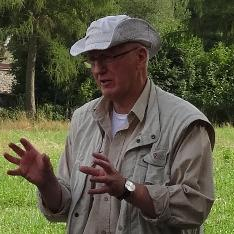Mineral Deposits of Central Europe
A special issue of Minerals (ISSN 2075-163X). This special issue belongs to the section "Mineral Deposits".
Deadline for manuscript submissions: closed (15 August 2019) | Viewed by 61330
Special Issue Editors
Interests: economic geology; technical mineralogy; applied sedimentology-geomorphology; archeo-metallurgy; pegmatites; placers; clay minerals; supergene alteration; actuo-geology; ore geology strategic elements
Special Issues, Collections and Topics in MDPI journals
Interests: ore geology; economic geology; geochemistry; mineralogy; geochronology
Special Issues, Collections and Topics in MDPI journals
Special Issue Information
Dear Colleagues,
After more than two thousand years of mining in Central Europe, many of the metallic deposits can no longer be worked for the classical metals Fe, Pb, Ag, Cu and Sn. They are no longer competitive on a global scale and a different element spectrum encompassing REE, Ge, In, Ga, Nb/Ta, Sc, Li and Co is required by the new technologies. Mineral deposits operated for industrial minerals in Europe still rank very highly in the raw material supply. The Special Issue devoted to “Mineral deposits in Central Europe” offers a forum to present the geological features of the traditional mining regions in Central Europe as well as new discoveries, exploration models, and processing and application techniques related to high-tech metals and to the varied spectrum of non-metallic commodities such as clay minerals, silica raw materials, volcanic rocks and lightweight aggregates. Ornamental stones and gemstones, highly estimated for their aesthetic value are not excluded. The regional constraints of the study area may be deduced from the mineral and resources map on the scale 1: 2 500 000 published within the scope of the most recent overview of fossil fuels, ore and industrial minerals in Central Europe by Dill et al. (2008).
Prof. Dr. Harald G. Dill
Prof. Dr. Sabina Strmic Palinkas
Prof. Dr. Stanisław Z. Mikulski
Guest Editors
Manuscript Submission Information
Manuscripts should be submitted online at www.mdpi.com by registering and logging in to this website. Once you are registered, click here to go to the submission form. Manuscripts can be submitted until the deadline. All submissions that pass pre-check are peer-reviewed. Accepted papers will be published continuously in the journal (as soon as accepted) and will be listed together on the special issue website. Research articles, review articles as well as short communications are invited. For planned papers, a title and short abstract (about 100 words) can be sent to the Editorial Office for announcement on this website.
Submitted manuscripts should not have been published previously, nor be under consideration for publication elsewhere (except conference proceedings papers). All manuscripts are thoroughly refereed through a single-blind peer-review process. A guide for authors and other relevant information for submission of manuscripts is available on the Instructions for Authors page. Minerals is an international peer-reviewed open access monthly journal published by MDPI.
Please visit the Instructions for Authors page before submitting a manuscript. The Article Processing Charge (APC) for publication in this open access journal is 2400 CHF (Swiss Francs). Submitted papers should be well formatted and use good English. Authors may use MDPI's English editing service prior to publication or during author revisions.
Keywords
- Classical base metals
- electronic/strategic elements
- industrial minerals
- ornamental stones
- exploration models
- processing
- Central Europe
Benefits of Publishing in a Special Issue
- Ease of navigation: Grouping papers by topic helps scholars navigate broad scope journals more efficiently.
- Greater discoverability: Special Issues support the reach and impact of scientific research. Articles in Special Issues are more discoverable and cited more frequently.
- Expansion of research network: Special Issues facilitate connections among authors, fostering scientific collaborations.
- External promotion: Articles in Special Issues are often promoted through the journal's social media, increasing their visibility.
- e-Book format: Special Issues with more than 10 articles can be published as dedicated e-books, ensuring wide and rapid dissemination.
Further information on MDPI's Special Issue polices can be found here.






